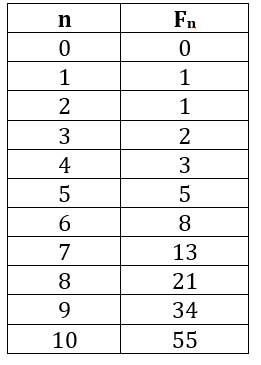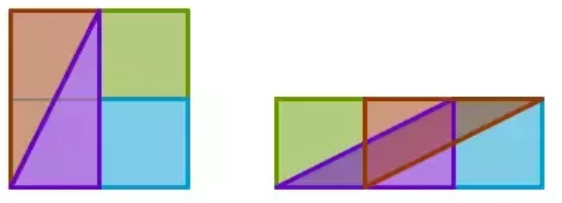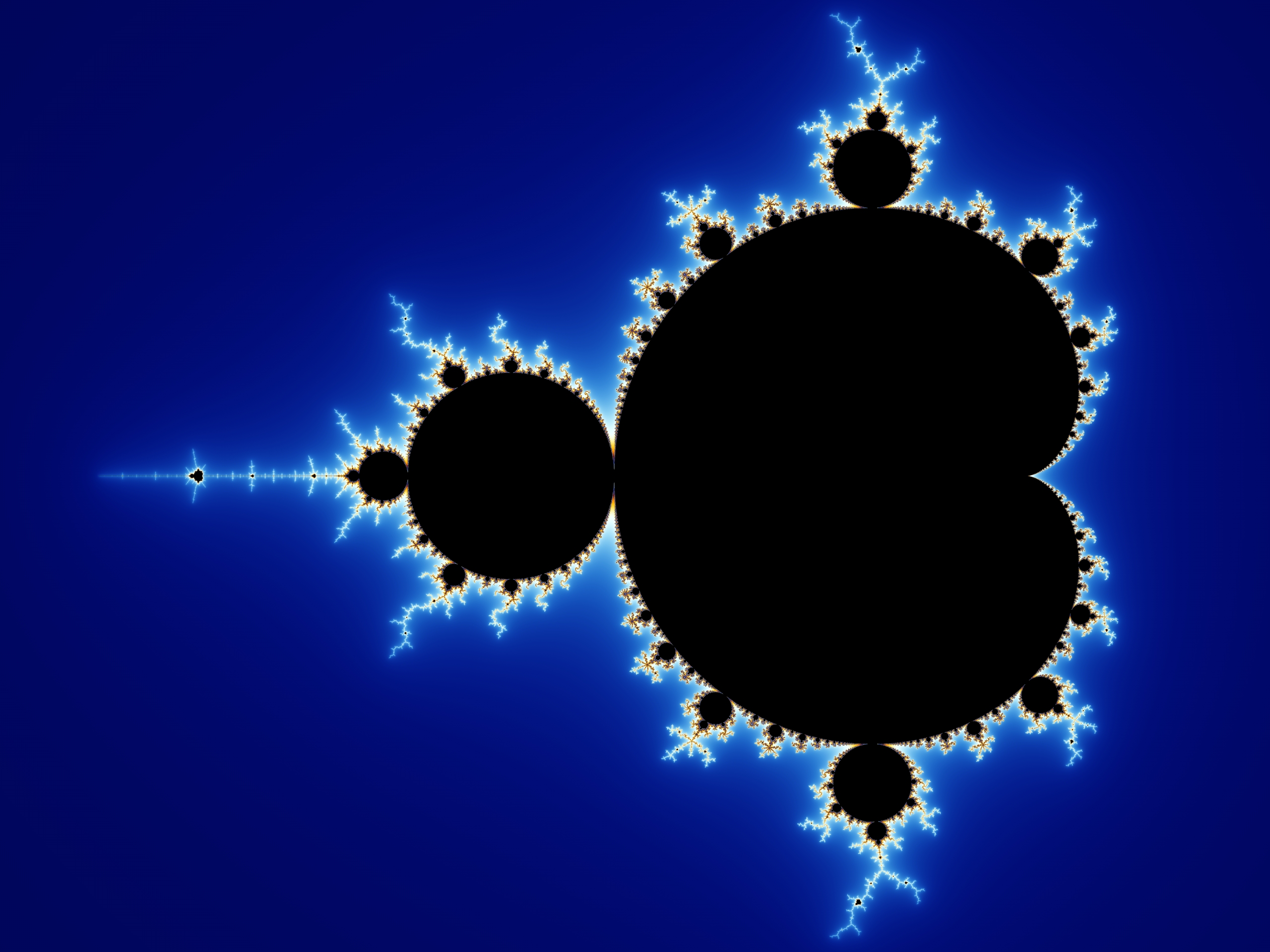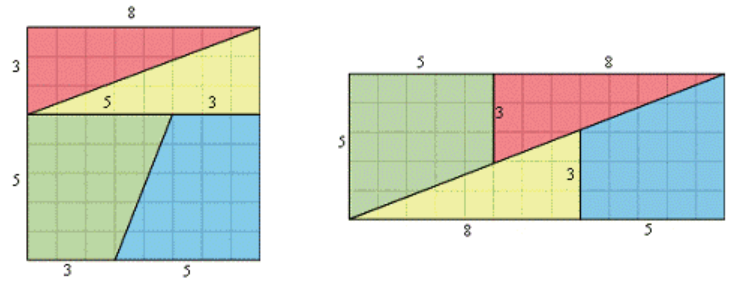Initially, I thought of writing about the Fibonacci series for my next post. Then, I came across an interesting article in a Quora Space called “Beautiful Mathematics” (If you are somebody interested in Mathematics, I would suggest you follow this space in Quora: Beautiful Mathematics). The article linked the Jigsaw Paradox with the Fibonacci numbers which I found to be interesting and thought would be a good way to introduce the Fibonacci Series. Though the original article tends to get a bit heavy towards the end with regards to mathematics, I will try to tone it down here.
The Jigsaw Paradox
The Jigsaw Paradox, also known as the Chessboard Paradox, claims that you can take an 8×8 board, cut into 4 pieces(as specified below) and, re-arrange it into a 5×13 rectangle!!!

If you observe, the square in the right has 8 x 8 = 64 squares, while the rectangle in the right has an area of 5 x 13 = 65 squares. But both consist of the same pieces re-arranged right? So, where did this extra square pop up from?
There is no paradox here. Just clever manipulation of numbers. But, at its core, lies the Fibonacci series. Let us first look at the Fibonacci series
The Fibonacci Series
The Fibonacci series is a series of numbers (denoted by Fn) where, the next number in the sequence, is given by the sum of the previous 2 numbers.
i.e Fn = Fn-1 + Fn-2
The starting numbers are given by F0 = 1 & F1 = 1. Hence, the 2nd number is 0+1 = 1, 3rd number is 1+1 = 2, 4th number is 1+2 = 3 and so on….

If you see in the Jigsaw paradox, 64 = 8 x 8 & 65 = 5 x 13. The numbers involved are 5, 8 and 13, which are 3 consecutive numbers(5th, 6th & 7th) in the Fibonacci series. This is where Cassini’s Identity comes into the picture.
The Cassini’s Identity connects 3 consecutive Fibonacci numbers with the following equation
Fn-1Fn+1 – Fn2 = (-1)n
Putting n = 6 in the above equation, we get:
F5F7 – F62 = 5.13 – 82 = 65 – 64 = 1 = (-1)6
Which is essentially the Jigsaw Paradox.
From this, we can see that it is always possible to re-organize an Fn x Fn square into a rectangle of dimensions Fn-1 x Fn+1. The difference would either be +1 or -1 depending on which Fibonacci number you choose. The only condition is that you have to choose 3 consecutive Fibonacci numbers.
Geometric Interpretation
Another way to explain this paradox is using basic geometry which might not be as interesting as the one using the Fibonacci numbers.

Consider the triangle AFE, tan(∠FAE) = 3/8 = 0.375. Hence, ∠FAE = 20.556o
Consider the triangle FCG, tan(∠CFG) = 2/5 = 0.4. Hence, ∠CFG = 21.801o
From this, we see that both the angles are not equal. This implies that the points A, F & C are not collinear. Which means, AFC is not a straight line!!!
We conclude that, the rectangle ABCD is not exactly a rectangle – it would be having a diamond-shaped hole along its AC diagonal with a square area of one unit. Something similar to the one below. The below one is the case for n=4 where you take a 3×3 square and turn it into a 2×5 rectangle.

Whenever n is even, we get an extra square(as in the case above for n=6), since according to Cassini’s identity, the difference will turn out to be +1. [(-1)n = +1 when n is even]
In the case of n being odd, we will have an overlap since the difference will turn to be -1 i.e loss of a square. [(-1)n = -1 when n is odd]. Like the case below(n=3) where you convert a 2×2 square into a 1×3 rectangle.

So, we see that the human eye can be easily fooled by optical illusions. But, the numbers never lie to you!!!
Anybody interested in the proof for Cassini’s Identity can refer to this post: Proof of Cassini’s Identity
Thanks for Reading!!!
P.S: Somewhat related to the above post: Refer to the below video on how to get free chocolate 😜
References
- The original post from Quora based on which I wrote this post: What is the Jigsaw Paradox?
- https://en.chessbase.com/post/a-mathematical-cheboard-paradox

